
Review on Snow Lutron Maestro LED+ Motion Sensor Dimmer Switch - No Neutral Required MSCL-OP153M-SW by Jason Ampongan

Why it’s good to be dim
This Lutron MSCL-OP153M motion sensor dimmer costs more than others, but if you are sensitive about your home environment, it may well be worth it to you. I have installed 3 of these in my home during the past few years, and am very pleased with them. I was on the verge of purchasing a fourth switch when amazon offered me a free one as part of the vine program, in exchange for writing a review - an offer I just couldn’t resist.If your light switch is in a favorable location, you can replace it with a motion sensor and the lights will turn on automatically when you walk into the room. Very handy in places like garages, laundry rooms, workshops - basically any room you tend to enter with your hands full.The most obvious thing setting these Lutron Maestro sensors apart, is the pleasant, soothing, fade-to-on and fade-to-off effect. When we come home at night, our hall lights smoothly fade to on as we walk through the front door. We no longer need a constantly burning night-light in the bathroom: as a guest enters the room the lights gracefully fade-on, and then turn themselves off just as gracefully a few minutes after the room is vacated.Other, less expensive occupancy sensors can do a similar job, but the big downside is they snap on, and snap off abruptly. They are a good choice if you are on a tight budget, or if your lights cannot be dimmed (most fluorescent tubes cannot). There are many brands of this harsh style switch, including Lutron (I installed one in my mothers laundry room with non-dimmable fluorescent lights and it works fine). But don’t kid yourself, the experience of this abrupt on-off style switch is far inferior compared to the Maestro dimming sensor. In most applications, I would probably re-lamp the room with bulbs that dim in order to use the Maestro.The Good:Clear, comprehensive instructions come with the switch, detailing the most common installations. Plus you can look up additional details online for special cases.The wiring job is easy, and straight-forward IF you are replacing a single-switch-controlled light. Just wire it in exactly like the switch you are replacing and it will work fine.Can be wired into situations where more two switches control a single light (curiously called a "three way” configuration in the electrical trades). This situation is a bit tricky so you will need to follow the instructions carefully, but it can be done (if I can do it, probably you can too!). This extra complexity isn’t really a knock against Lutron, because even regular, mechanical 3-way switches can be a challenge to many DIY folks, especially those who don’t like to follow instructions.Lutron also makes a companion control that simplifies the 3-way situation, but I have no experience with that.Configurable in numerous ways to suit your taste, or the situation. The switch can function as an occupancy sensor (lights go on when you enter a room, and off when you leave, automatically), a vacancy sensor (you manually turn on the lights, and they go off automatically when you leave the room), and in many other ways. (More details about this below).Completely silent when turning on and off. Less expensive, non-dimming sensors usually use relays - if you have sensitive ears you will hear them click on and off.Lights can be set to any level. The dimmer part of this sensor consists of Lutron’s highly regarded Maestro dimmer. See reviews of that particular product for complete details.These switches are available in multiple colors (I have a Burgundy colored one in my wine-room, for example).These are thoughtfully-designed, sophisticated, well made switches - typical of the Lutron brand. I have numerous Lutron switches - some more than 10 years old - and cannot recall encountering a single defective one.The switch gives you ample warning that it is about to turn off the lights by dimming them many seconds before things go dark. This is a wonderful, useful feature - something cheaper, on-off style sensors simply cannot do.The Bad:Your existing switch must be in a "favorable” location. Basically the switch needs to be able to "see” you in order to work it’s magic. (More details available in Lutron’s online document.)These switches are a bit bulkier than simple mechanical switches. Not a problem in most cases, and no bulkier than regular dimmer switches, but maybe an issue if you’ve got a really small, tight, overcrowded electrical box.Summary:Any light that can be dimmed can be automatically and gracefully turned on and off by this sensor switch, as long as it can "see” you in the room. It will work with most bulbs that are dimmable, (including LEDs, Halogens, etc.)If your bulbs cannot be dimmed, this switch will not work - consider re-lamping with appropriate bulbs, or use an on-off style sensor (e.g. Lutron’s MS-OPS2).Other Details:What is a favorable location? A switch located inside the room, next to the doorway is often a very good location. Many switches in bathrooms, laundry rooms, and garages are oriented this way.A less favorable location is a switch that sees too much. For example I have a hallway light switch that sees into another room. It was a challenge to set up because it would turn on when one walked from the kitchen to the living room. I was able to get it working quite nicely by partially covering the sensor with a small piece of tape (basically "blinding its view to the left”).Configurability. Wow. There are so many ways to configure this switch I will cover only a few of the cool things you can do:Turn lights on when a person enters the room, and off a short time after everyone has left the room. This is often called an Occupancy Sensor.Do NOT turn lights on automatically - only do it if the On button is tapped (like a regular switch). But, once everyone leaves the room turn the lights off automatically. This is often called a Vacancy Sensor.Never automatically turn the lights on during the day - only do it when the room is dark (uses an ambient light sensor for this trick).Turn lights on automatically when someone enters the room. If that someone turns the lights off, don’t turn on again automatically until everyone has left the room. You might use this in your TV room.Set the highest and lowest levels the dimmer can be adjusted to. (Useful for certain finicky LED bulbs that don’t dim all the way down, for example).Adjust the level the lights go to when the switch automatically turns on (default is 100%).Adjust the rate at which the lights fade on and off.Disable the small, discrete, indicator lights on the switch (not even I am fussy enough to have tried this one - yet!)Set timeout duration to (1, 3, 5, 15 or 30 minutes). This is how long lights stay on after the room is vacated. Default is 5 minutes.Adjust the sensitivity of the main sensor (high or low). If this isn’t enough, you can cover part of the sensor with tape, as I did for my hallway switch.For additional details about this switch, goto the Lutron website (lutron.com), and search for the document entitled: 048480a.pdf. This 23 page document provides a wealth of information about the sensor range, settings, and myriad configuration options.Buy the way. If you really must know, my latest Lutron switch is going to automatically control the lights in our walk-in closet.Hope you found this review useful.
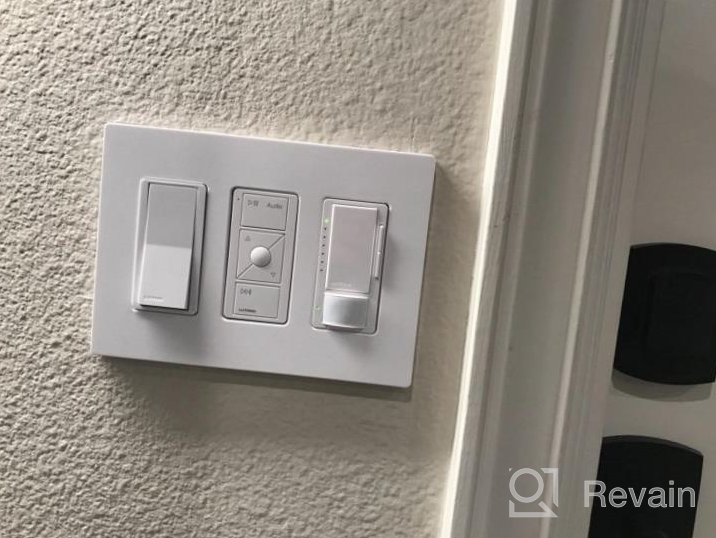
- No
- Motion sensor feature may cause false triggers
New products
Comments (0)
Similar reviews
Top products in 🕹️ Switches & Dimmers

The Clapper Smart Home Technology - Original Sound Activated On/Off Light Switch Device For Kitchen, Bedroom, TV, And Appliances - 120V Wall Plug - As Seen On TV Home Gift - Optimize Your Home!

24 Review
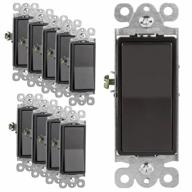
ENERLITES Elite Series Decorator Rocker Light Switch, 15A 120V/277V, Gloss Finish, Single Pole, 3 Wire, Grounding Screw, Residential Grade, UL Listed, 91150-DB, Dark Bronze Color (10 Pack)

34 Review
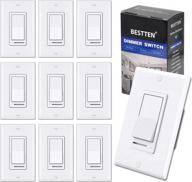
10 Pack BESTTEN Dimmer Light Switch - Single-Pole Or 3-Way, 120V Compatible With LED/CFL/Incandescent/Halogen Bulbs & Wallplate Included - UL Listed White

43 Review
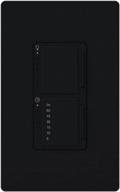
Black Lutron Maestro MA-L3T251-BL 300-Watt Single-Pole Digital Dimmer And Timer Switch For Incandescent And Halogen Bulbs

39 Review
Another interesting products
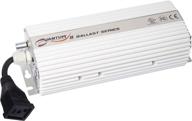
💡 Hydrofarm Quantum QT400 Dimmable Ballast for 400W Grow Lights

5 Review

Wireless Electronic Ballast Interface Certified

8 Review
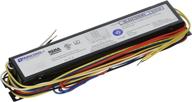
Robertson Worldwide ISL432T8HEMV AH 3P20160 120-277V 50-60Hz High Power Factor 4 F32T8 Linear Lamp Fluorescent eBallast

6 Review

💡 Electronic FL Ballast ICN-4P32-N (Formerly ICN-4P32-SC) for 3-4 F32T8 F40T8 F17T8 Lamps, 120V/277V Compatibility

5 Review

